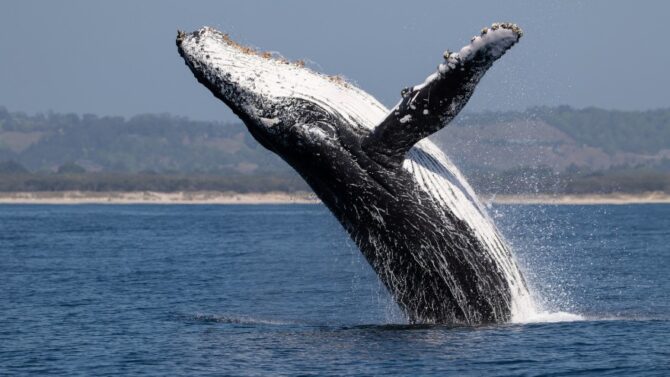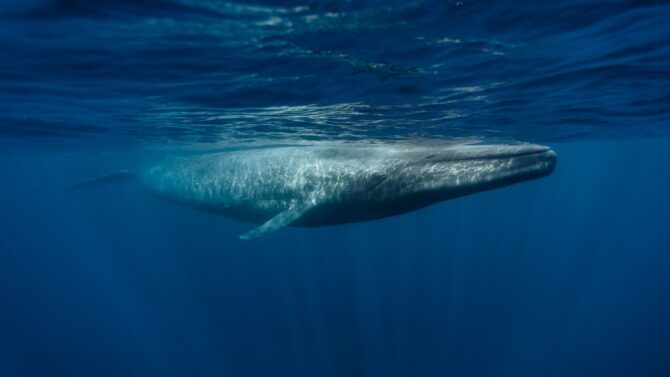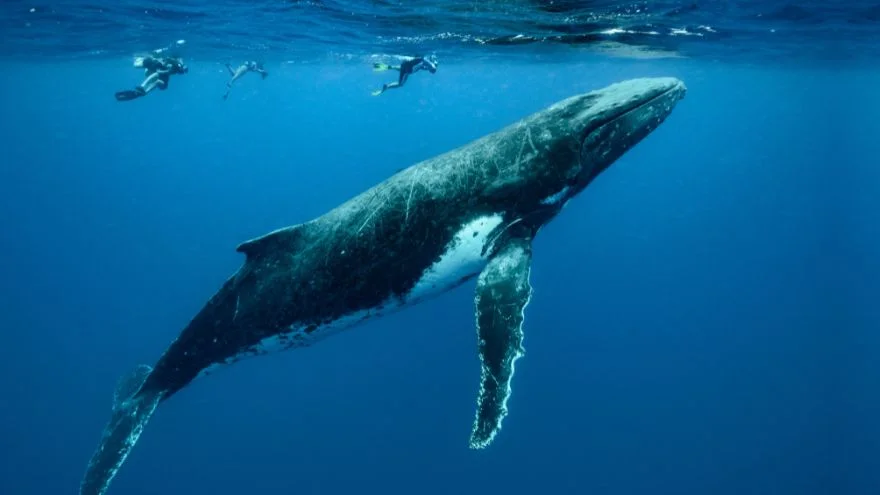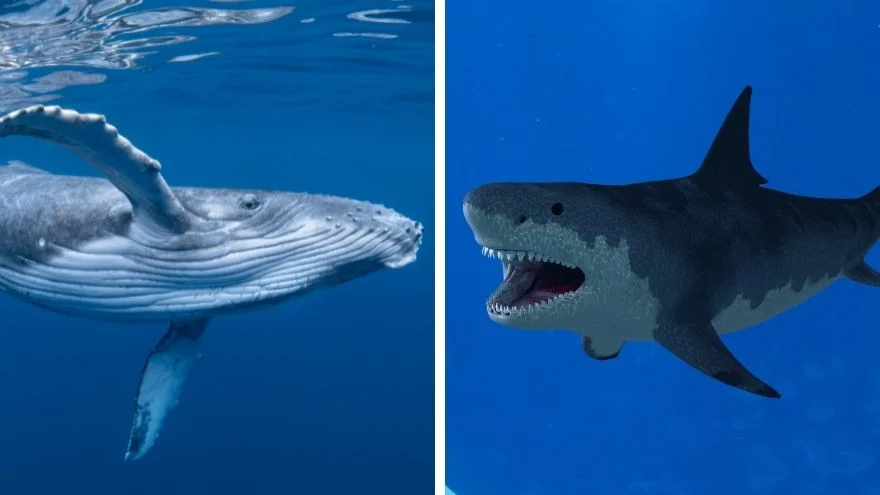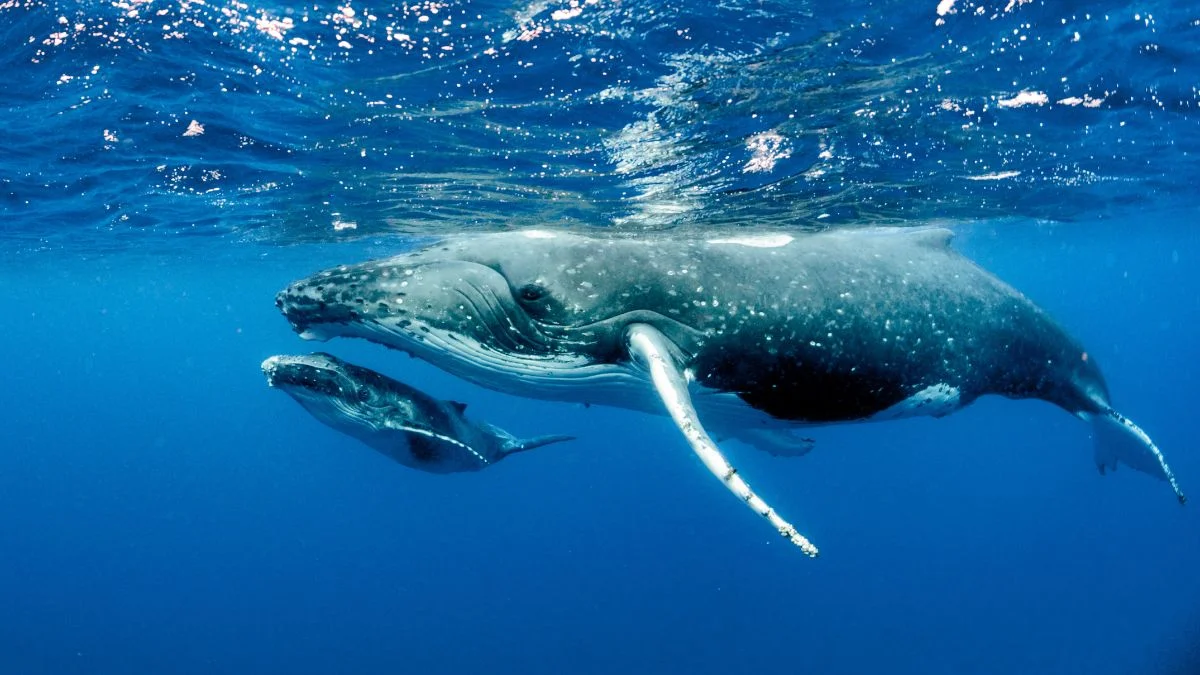Whales are members of the infraorder Cetacea and the order Artiodactyla. The term refers to a group of different marine mammals, found in many places around the world.
They are considered relatives of the hippopotamus and may have some links to dolphins as both are marine mammals. Dolphins are sometimes classified as whales.
Whales excite people because of their size, and it’s hard to see one simply by observing the ocean. This is why whale watching has become a fun activity for many.
These mammals are fully aquatic, but they do come on the surface like dolphins, so if you’re lucky you just might see one!
Scientific Classification
- Kingdom: Animalia
- Phylum: Chordata
- Class: Mammalia
- Order: Artiodactyla
- Clade: Cetaceamorpha
- Infraorder: Cetacea
- Parvorder: Mysticeti
- Parvorder: Odontoceti (Traditionally excluded but cladistically included)
- Family: Delphinidae (dolphins, porpoises)
- Superfamily: Platanistoidea (Asian river dolphins)
- Superfamily: Inioidea (South American river dolphins)
Characteristics (Using the Humpback as an example for some)
- Length: 48 to 62 feet
- Weight: 40 to 100 tons
- Venom/Poison: No
- Skin Type: Smooth
- Habitat: Oceans
- Range: Major oceans
- Diet: Omnivore
- Life span: 45 to 50 years
- Gestation Period: 11 months
- Conservation status: Endangered
5 Interesting Facts About Whales
1. The Blue whale is the largest known creature (though there’s something about their name…)
The blue whale holds the record of being the largest mammal to have ever lived on our planet. It weighs over 150 tons—which is 300,000 pounds!—with a height of over 100 feet.
This particular species is considered bigger than even the largest dinosaurs that roamed the earth.
The largest individual is said to have measured up to 190 tons. To show how big it is, this marine mammal can lift 30 elephants or 2,500 people!
Though termed blue, this species isn’t blue. They got this name from the blue watercolor seen all around them as they rise to the surface to get air.
Sadly, the blue whale is on the brink of extinction. There used to be an estimated 225,000 blue whales. However, the extreme exploitation has led to there being less than 2,000.
2. Dolphins can be classified as whales
“All dolphins are whales but not all whales are dolphins” is a popular phrase used by marine enthusiasts to highlight an important fact.
Though not every classification puts these two mammals together, dolphins are formally considered to be whales.
They do have their differences, especially in the area of size. Dolphins are the smaller of the two and they also have only one blowhole whereas species traditionally considered whales have two. They also have similarities, both in looks and behavior.
3. The sperm whale is the largest-toothed predator
The sperm whale falls under a subtype that has teeth rather than balleens, and amongst toothed predators, it is the largest.
It weighs more than 50 tons with a length that gets to 52 feet or even as long as 68 feet. It is the only member of its genus Physeter, and one of three species in its family.
This species also has the biggest brain on the whole planet, far bigger than that of a human or any other animal there is. This is evident by their unusually large head that houses the brain.
We may suspect that they have high intelligence, but not much is known about that because the species remains mysterious.
4. They communicate with sounds
These animals have a unique way of communicating. While most living creatures make sounds, the interesting thing about our marine friends is the quality of the sounds they make.
The humpback is known to produce a combination of sounds that comes across as singing. These sounds include groans, grunts, whistles, and woops. The species can sing for hours.
Other species have their sounds as well. Toothed whales use clicks and whistles, while the baleen types make bass sounds.
The low frequency is an advantage as it helps the sound travel through the waters without disruption. Some sounds may not be picked by normal human ears but can be heard by other whales from afar.
5. They have many stomachs
Similar to animals like cattle and some other herbivorous mammals, whales have many stomachs.
The average number of both them and dolphins is between 3 to 4, but some species can count more. For instance, the Baird’s beaked has up to 13 stomachs!
One might imagine there could be some other uses of these stomachs besides digestion, but in truth, there is no other purpose.
General Description
Whales can generally be classified into two types: the baleen and the toothed.
Baleens are characterized by their absence of teeth. In place of teeth, they have baleen structures.
These species swallow their meal alongside water, then expel the water using the baleens. Due to their size and head shape, they take in a lot of water.
The toothed species have teeth shaped like cones which they use to trap fish and squids. While baleens have a strong sense of smell, toothed ones have stronger ears.
They can survive even if blind, and their hearing helps them get food even on the deep sides of the waters.
Altogether, they are believed to have evolved from land-living mammals. Thus, even as marine inhabitants, they breathe air. They occasionally rise to the surface to inhale air but live in oceans.
They can stay underwater for long periods, going for more than an hour. They also share similar features with other mammals, including their warm-blooded nature.
Overall, whales have streamlined bodies, two limbs, and blowholes. They move fast across the ocean, though when compared to other marine mammals like seals. When you do consider their size, the speed is impressive.
Distribution and Habitat
Whales can be found in oceans all over the world, including Antarctica. Most species live close to the shores so they can get to the surface with ease, though some can go deep in search of food.
Migration is a part of the animals, and they travel a lot, swimming up to 16,000 miles. The migration depends a lot on the climate.
Whalers have greatly affected the population of many species, including the sperm whale, the humpback, and the blue.
As such, they may not be common in every country. Some species are regarded as least concern, others as vulnerable and a couple is endangered.
Diet
These mammals are omnivores, feeding on both plants and animals. The specific diet will depend on the species in question, but there is considerable overlap.
One favorite amongst species seems to be krill. They also feed on plankton, fish, crustaceans, mackerel, herring, sea snails, and others. Bigger species can target larger prey like squids and even other sharks.
The feeding style depends on the type, just as we pointed out above. Baleens swallow all they can, then filter out the water so the food can remain.
The toothed ones also swallow their food rather than chew, as their cone teeth are not adapted to chewing.
Reproduction and Mating Process
Typical of a mammal, whales reproduce sexually and give birth live. There are some variations in methods amongst species as each has its courtship style and rituals. We’ll examine two species, the humpback, and the blue.
When they are ready to mate, humpbacks migrate in groups known as pods. Each pod contains an average of 2 or 3 members, though there may be more. Some individuals migrate solo, but that’s not the general rule.
When they get to the breeding ground between December and May, they form competition pods. This is when the struggle for a suitable mate begins.
These males fight for a female, usually they go after an escort (male) of a female. Their fight isn’t against themselves, however. What they do is compete for the attention of the female.
To compete, these males bump heads, splash their fins, and slap their tails together to get the female’s attention.
They also sing and chase down the female. Some males drop out midway, and more may join.
Only one male succeeds in the end, and he’s the one to fertilize the female’s egg with his sperm. Humpbacks are polygamous and do not stick to one mate after the season.
The blue whale does what is called a “heat run” similar to the competition pod, except in this case there are usually only two males in pursuit of the female.
The gestation period is often between 10 and 12 months and the female gives birth in the breeding ground.
Little ones are called calves, and their size depends on the species. Blue calves are usually very big, weighing up to 6,000 pounds at birth.
Predators and Threats
Who’d want to prey on a whale? Turns out, there are a few sea creatures that will consider these giants their next meal.
The healthy adult doesn’t have many enemies, but some species can be hunted down by the great white shark.
Smaller individuals and injured adults get targeted by different shark species and other whales.
The biggest threat to these animals is (obviously) humans. Different species get hunted yearly, and humans are the main reasons the whale population has reduced. Fortunately, there are laws protecting them in the United States.
Behavior
All whales rise above the surface, and this behavior is termed breaching or cetacean surfacing behavior. All whales do this, but by far the most exceptional is that of the humpback. It is always a sight to behold.
The species breach more frequently, launching themselves almost fully out of the water. They then use their fins to slap the surface, and many experts suspect that it is a form of communication.
No one is quite sure why they breach, but several theories have been offered. Besides breathing, they could be getting rid of parasites, communicating, or just for the fun of it.
As fully aquatic animals, whales do everything they have to at sea. They mate, feed, give birth, and raise their calves in water.
Though they breathe air, they do not stay on the surface for long. Their time is mainly spent underwaters, but close to the surface.
They’re social animals as well, usually forming tight-knit groups similar to those of humans.
They have complex relationships and even one-on-one friendships, and it has also been proven that they have feelings. Mothers are attachment parents, which means they stick to their calves for a long time.
They would take the calf to the surface for it to breathe. When the young one becomes independent, they detach from the mother.
Male vs Female
Many species are sexually dimorphic, in that there’s a big difference between the male and female.
Unlike what we see with other mammals, the female (called a cow) tends to be bigger than the male (called a bull).
You can notice this if you are acquainted with this animal, otherwise, you may not realize it. You might also know that the individual you see is a female if it has a calf following it.
Then there are the genitals. The male has a genital slit close to its belly, while the females own appears near the tail. Males have a penis, females have a vagina.
Frequently Asked Questions
Is the blue whale extinct?
The blue whale is the largest species and the largest living land mammal on planet Earth. The population was once high, but it has since reduced due to human activities. The blue whale isn’t extinct, though, but there are only about 2,000 left.
Is the whale a fish or a mammal?
Whales live underwater, but they aren’t classified as fish. They have all the characteristics of mammals and even breathe air. These animals are marine mammals.
Can a shark eat a whale?
Some species are easy targets for sharks, especially when they are injured or small. Very big species don’t get attacked by sharks, however.
Will a whale bite you?
While a whale may eat a human alive, there’s no evidence of that. This mammal can’t also bite because a lot of them don’t have teeth, to begin with. Even the teethed ones don’t bite. Attacks are also very rare.
Conclusion
Large and fascinating, these mammals have since been the subject of awe and extreme hunting for a long time.
The protective laws created to protect them have helped save many species, and the population of a good number has stabilized. We do hope that no species get extinct in the years to come.
